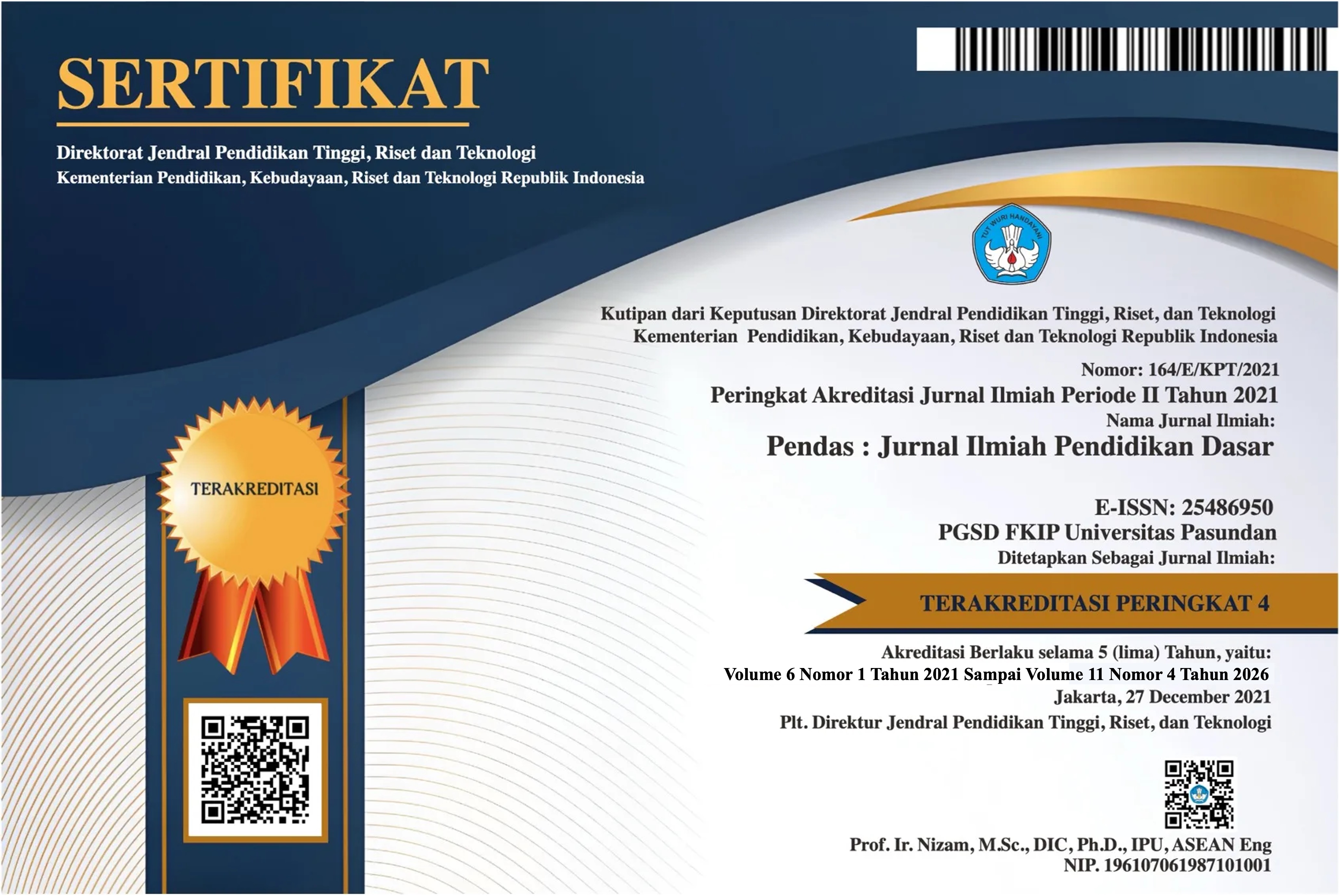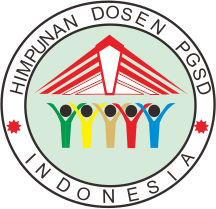PENGEMBANGAN LEMBAR KERJA SISWA DENGAN PENDEKATAN PEMBELAJARAN MATEMATIKA REALISTIK UNTUK MENINGKATKAN KEMAMPUAN PENALARAN MATEMATIS SISWA
DOI:
https://doi.org/10.23969/jp.v10i03.33161Keywords:
Students' mathematical reasoning abilities, student worksheet, realistic mathematics learning approach, ADDIE modelAbstract
This research is based on initial observations at the UPTD SMP Negeri 1 Gunungsitoli Selatan and the results obtained that students’ mathematical reasoning abilities were in the low category and the teaching materials used were still limited. Students had difficulty understanding the textbooks that were too advanced and relied solely on teachers in the learning process. The solution to this problem was to use teaching materials in the form of simple student worksheet, so they were easy for students to understand. The purpose of this research was to develop student worksheet with a realistic mathematics learning approach that was valid, practical, and effective in improving students’ mathematical reasoning abilities. This research is a development research. The development model used is the ADDIE model, which consists of five stages: analysis, design, development, implementation, and evaluation. The instruments in this study were learning outcome tests, validation questionnaires, and response questionnaires, and response questionnaires. The types of data used in this study are qualitative and quantitative data. Qualitative data consist of comments and suggestions provided by the validator regarding the developed student worksheet. Meanwhile, quantitative data consist of questionnaire results from the validator, student and teacher response questionnaires, and learning outcome tests. Based on the research results, the developed student worksheet have been tested and declared valid in terms of material validity (content), language validity, and design validity. Furthermore, the student worksheet are also very practical to use by students with a practicality percentage of 91% and a practicality percentage result from the teacher of 97.5%. The student worksheets are also effective in improving students’ mathematical reasoning abilities with an average score of 77.20 in the high category and a classical completeness percentage of 86.20 in the very effective category. So it can be concluded that the student worksheets with a realistic mathematical learning approach developed have met the expectations or objectives.
Downloads
References
Agusantia, D., & Juandi, D. (2022). Kemampuan Penalaran Analogi Matematis di Indonesia: Systematic Literature Review. Symmetry: Pasundan Journal of Research in Mathematics Learning and Education, 7(2), 222-231.
https://doi.org/10.23969/symmetry.v7i2.6436 . Diakses pada 25 Januari 2025
Fatin, A., Harahap, M. A., & Lubis, R. (2023). Pengembangan E-Modul Trigonometri Berbasis Android Untuk Meningkatkan Kemampuan Penalaran Matematis Siswa. Jurnal MathEdu (Mathematic Education Journal), 6(1), 6-14.
http://journal.ipts.ac.id/index.php/MathEdu . Diakses pada 26 Januari 2025
Halimah, I., Rakhmawati, F., & Yahfizham. (2022). Pengembangan Lembar Kerja Siswa Berbasis PMR Pada Materi Relasi dan Fungsi. Relevan: Jurnal Pedidikan Matematika, 2(5), 638-645. https://ejournal.yana.or.id/index.php/relevan/article/view/620
Handayani, A. D., & Sulistyono, B. A. (2022). Pengembangan Lembar Kerja Siswa (LKS) dengan Media Pembelajaran Flipbook Maker pada Materi Nilai Mutlak untuk Kelas X SMAN 4 Kediri. Prosisding SEMDIKJAR, 260-266. https://proceeding.unkediri.ac.id/index.php/semdikjar/article/download/1947/1289 . Diakses pada 29 Januari 2025
Hidayat, F. (2021). Model ADDIE (Analysis, Design, Development, Implementation And Evalution) Dalam Pembelajaran Pendidikan Agama Islam. Jurnal Inovasi Pendidikan Agama Islam, 1(1), 28-37.https://journal.uinsgd.ac.id/index.php/jipai. Diakses pada 17 Februari 2025
Karimah, L. N., Rusmana, I. M., Masitha, M. (2024). Analisi Kemampuan Penalaran Matematis Pada Materi Barisan dan Derett. Prosiding Diskusi Panel Nasional Pendidikan Matematika, 97-106. Diakses pada 26 Januari 2025.
Lase, S. (2020). Pengaruh Pendekatan Realistic Pendidikan Matematika (RME) Terhadap Kemampuan Pemahaman Konsep Siswa Kelas VIII SMP. Jurnal Review Pendidkan dan Pengajaran, 3(2), 462-468. http://dx.doi.org/10.31004/jrpp.v3i2.1694
Lubis, U. A., Maharani, I., Rokan, N., & Washliyah, U. Al. (2024). Pengaruh Model Pembelajaran Matematika Realistik ( PMR ) PEDAGOGI : Jurnal Ilmiah Pendidikan, 10(1), 65–72. https://doi.org/10.47662/pedagogi.v10i1.658 .
Rustama, A., Sahl, K. H., Ardianti, D., Solihin, A. H. S. (2024). Penelitian dan Pengembangan (Research & Development) dalam Pendidikan. Jurnal Bima: Pusat Publikasi Ilmu Pendidikan Bahasa dan Sastra, 2(3), 60-69. https://doi.org/10.61132/bima.v2i3.1014 . Diakses pada 17 Februari 2025
Santosa, F. H., Negara, H. R. P., & Samsul Bahri. (2020). Efektivitas Pembelajaran Google Classroom Terhadap Kemampuan Penalaran Matematis Siswa. Jurnal Pemikiran Dan Penelitian Pendidikan Matematika (JP3M), 3(1), 62–70. https://web.archive.org/web/20200725073115/http://journal-litbang-rekarta.co.id/index.php/jp3m/article/download/254/194/. Diakses pada 25 Januari 2025
Siahaya, J. A., Ayal, C. S., Ngilawajan, D. A. (2021). Analisis Kemampuan Penalaran Matematis Siswa pada Materi Persamaan Kuadrat. Science Map Journal, 3(1), 1-18.
https://doi.org/10.30598/jmsvol3issue1pp1-18 . Diakses pada 14 Maret 2025
Wewe, M. (2022). Pengembangan Lembar Kerja Siswa ( LKS ) Berbasis Pendekatan Pendidikan Matematika Realistik Setting Etnomatika Ngada. Jurnal Program Studi Pendidikan Matematika, 11(2), 1573-1580. https://doi.org/10.24127/ajpm.v11i2.5150 . Diakses pada 12 Januari 2025
Widana, I. W. (2021). Realistic Mathematics Education (RME) untuk Meningkatkan Kemampuan Pemecahan Masalah Matematis Siswa di Indonesia. Jurnal Elemen, 7(2), 450–462. http://dx.doi.org/10.29408/jel.v7i2.3744 . Diakses pada 25 Januari 2025
Yuda, E. K., & Rosmilawati, I. (2024). Literasi Numerasi di Sekolah Dasar Berdasarkan Indikator PISA 2023; Systematic Literatur Review. Journal of Instructional and Development Researches, 4(2), 172-191. https://doi.org/10.53621/jider.v4i3.326 . Diakses pada 26 Januari 2025.
Downloads
Published
Issue
Section
License
Copyright (c) 2025 Pendas : Jurnal Ilmiah Pendidikan Dasar

This work is licensed under a Creative Commons Attribution 4.0 International License.



















